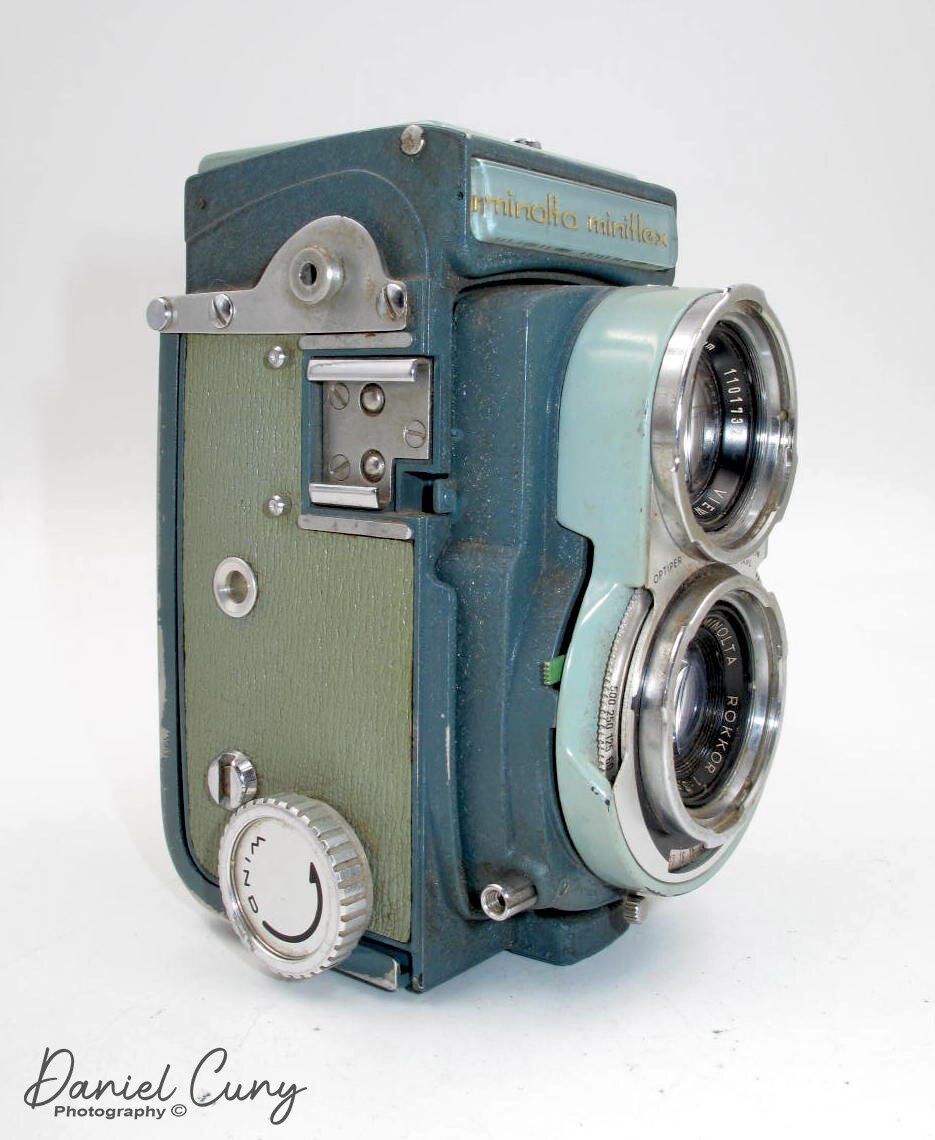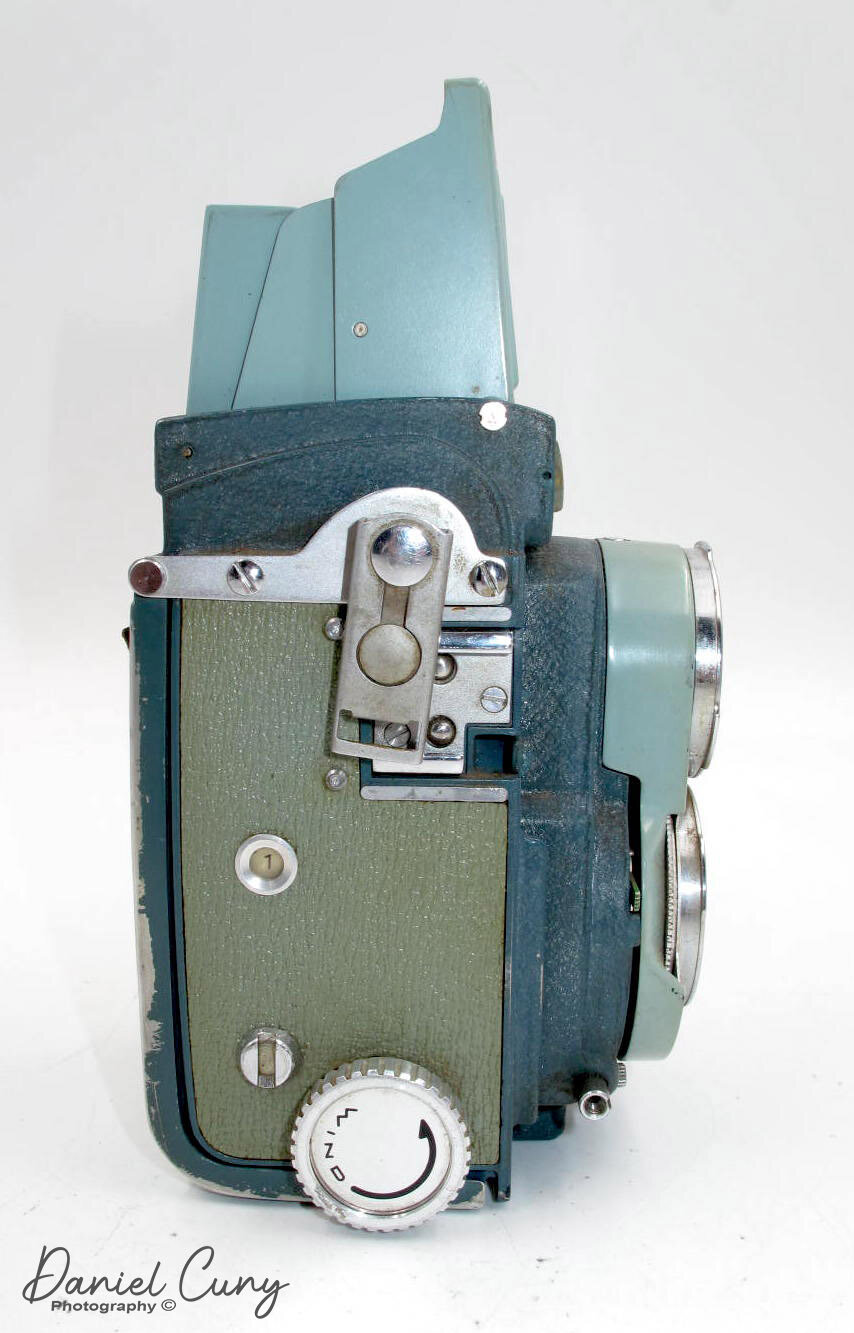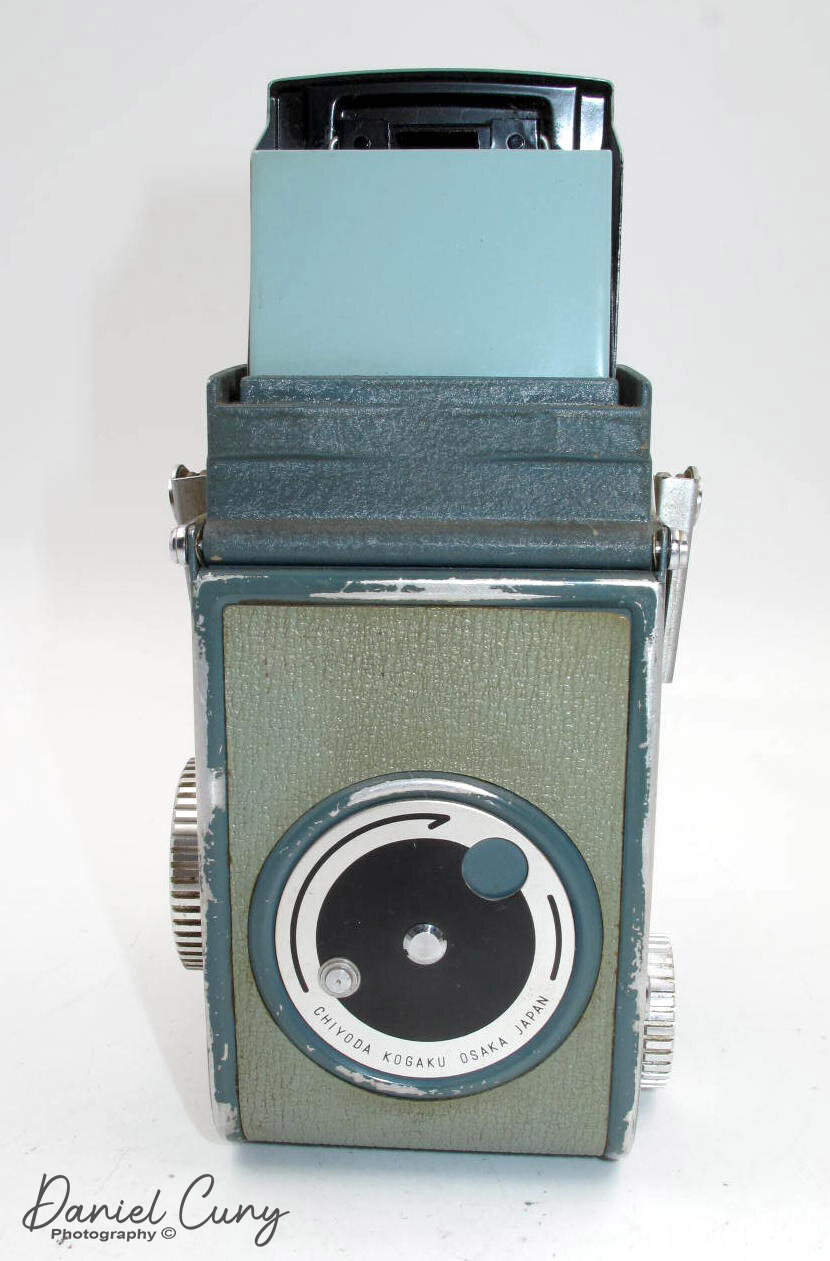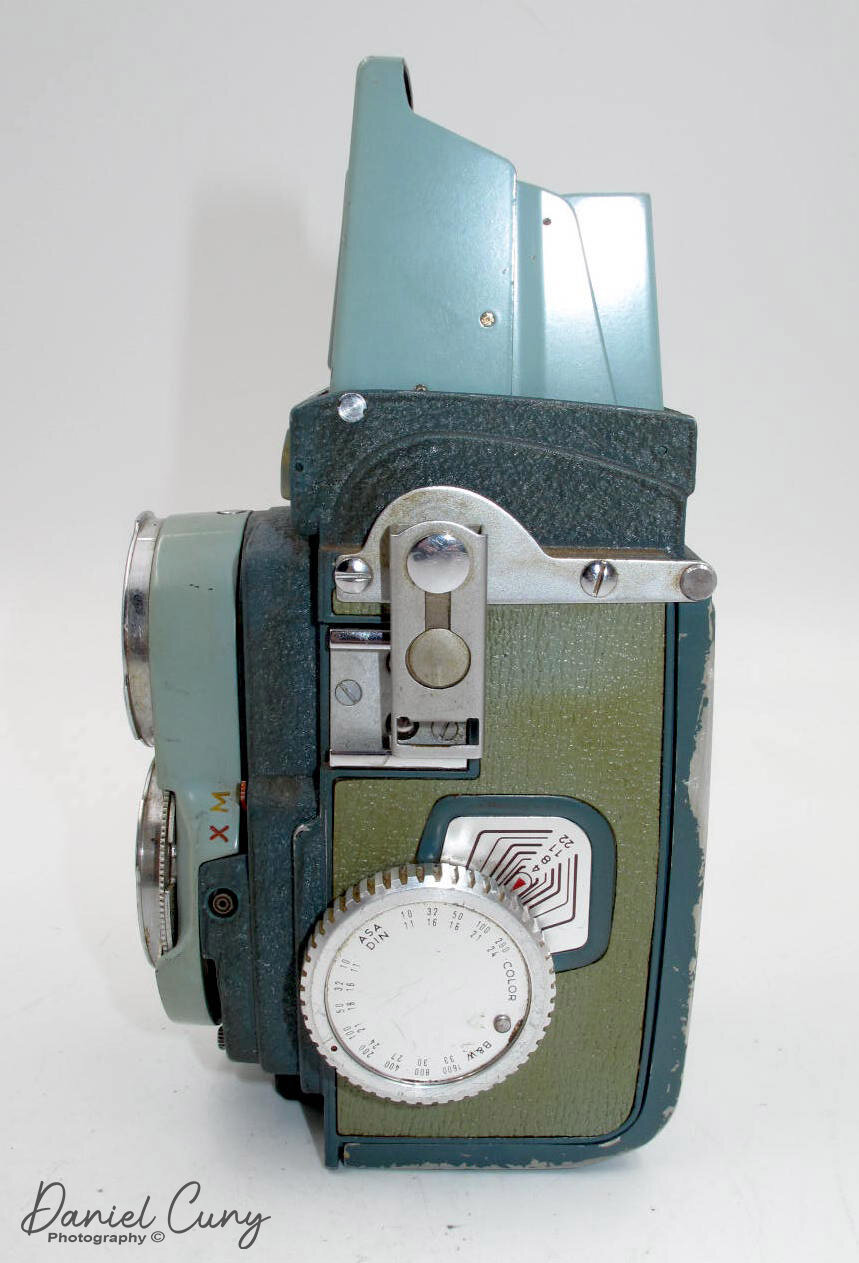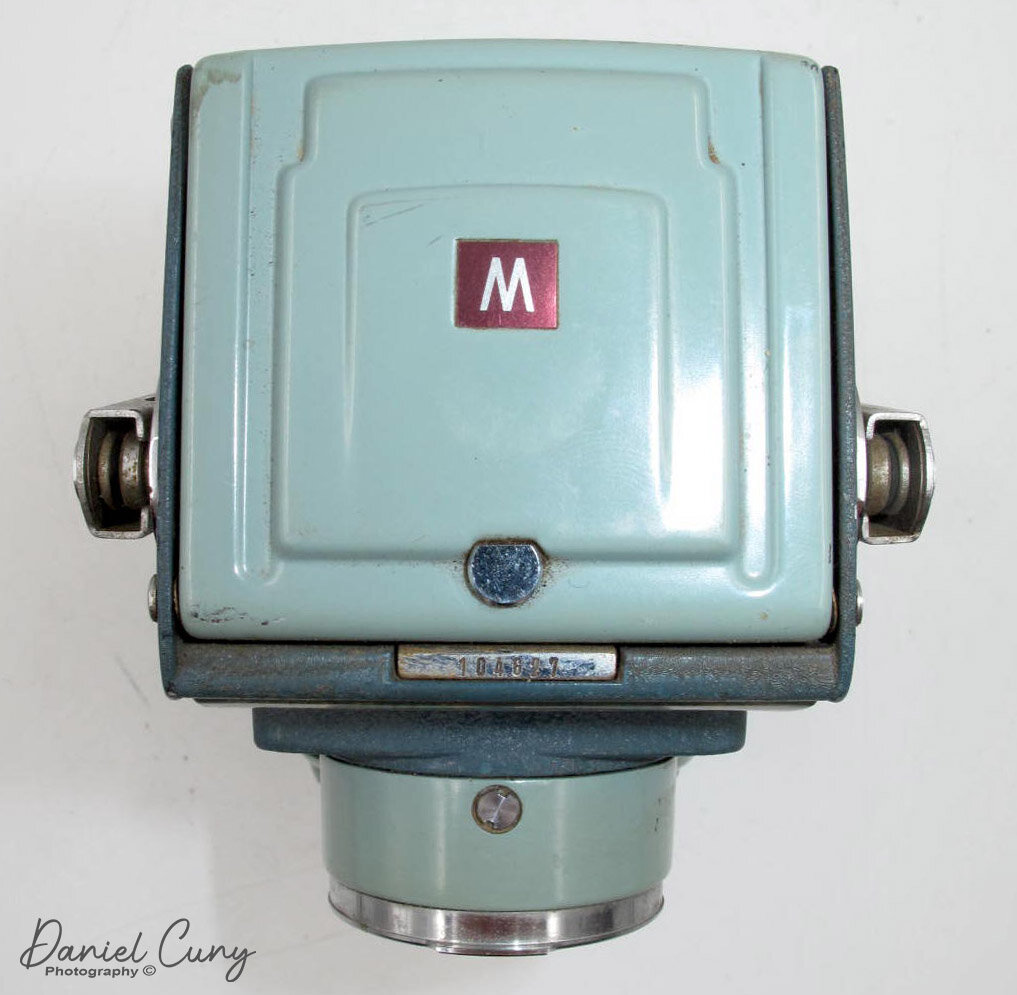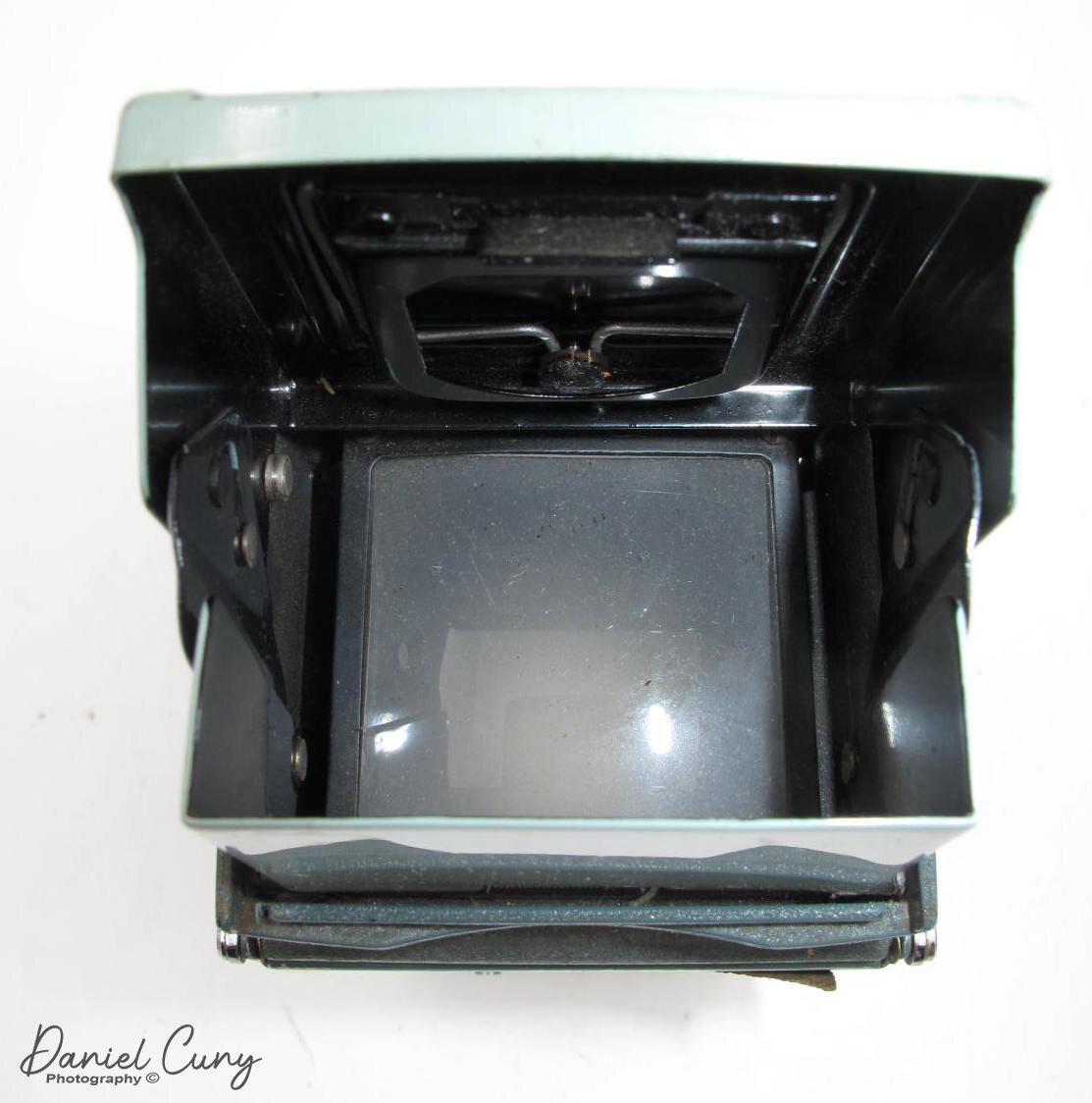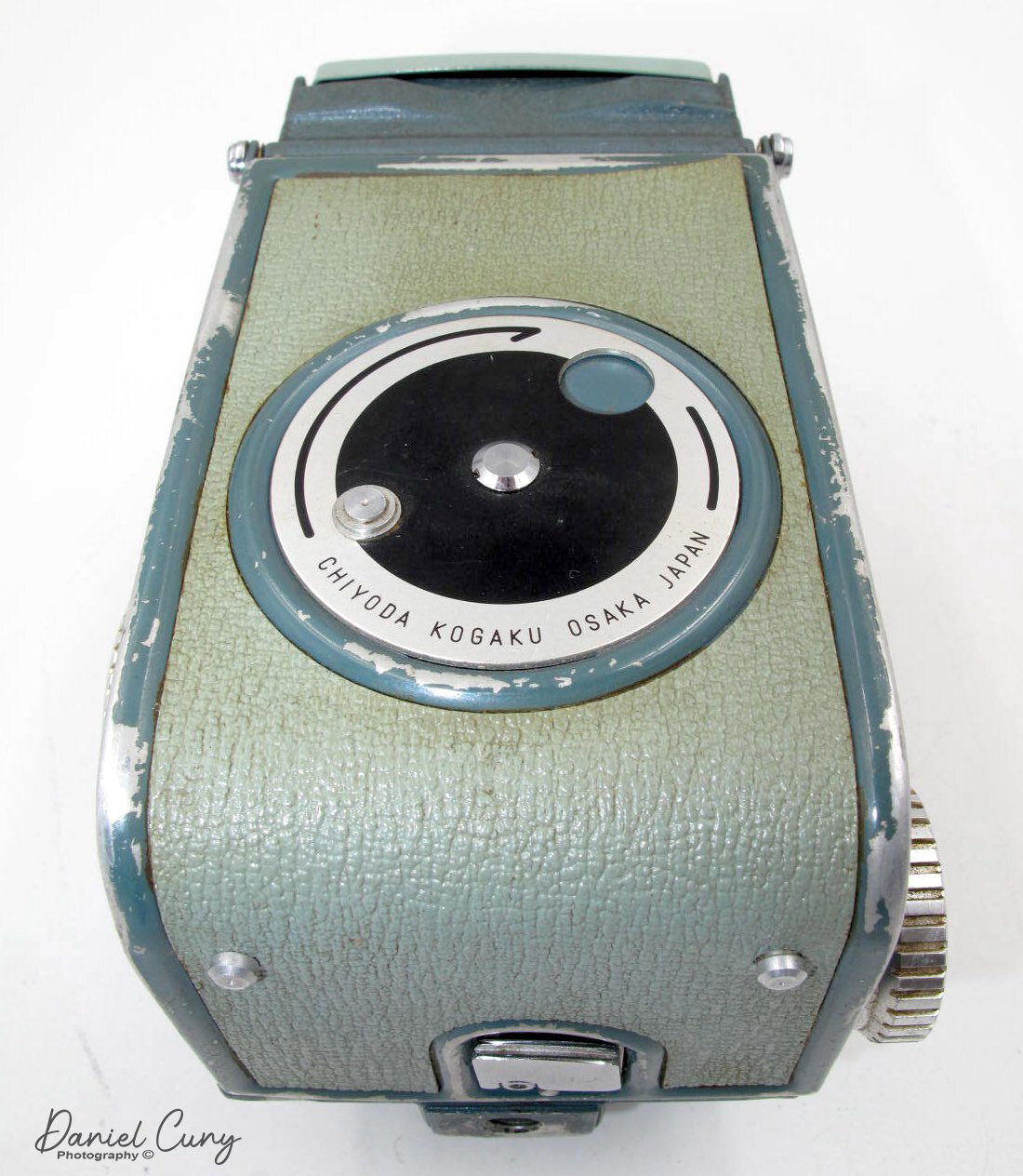In the 1950s, the Japanese camera industry was seeing an influx of the 35mm cameras with a smaller, more portable, and affordable camera. Camera companies like Nikon, Canon, and Minolta making headway into the camera market. Not only in the 35mm marketplace but the Japanese were also making Twin Lens Reflex (TLR) cameras giving companies like Rolleiflex and Zeiss some real competition. Companies like Yashica, Mamiya, Kuribayashi, and Tougodo Optical Co. were making TLR cameras in the after war market.
The camera I’m focusing on this week is the rare Minolta Miniflex which was introduced by Minolta in 1959 and was made by Chiyoda Kōgaku Seikō, predecessor of Minolta
Minolta, like Rolleiflex, was manufacturing TLR cameras. Rollei started making TLR cameras as early as 1929, and Minolta as early as 1936-1937 when they introduced the Minoltaflex I camera which was the first Japanese TRL making a 6x6 image (2 1/4” x 2 1/4”) image on 120 film. Even in the 1930s, Minolta was giving Franke & Heideke a run for their money as they were producing some high-quality TLR Cameras.
In 1957, Rolleiflex introduced their "Baby Rolleiflex” camera which was a camera introducing their "4x4” format camera. The 4x4 format was using 127 film and the camera was producing 12-1 5/8” x 1 5/8” negative size. 127 film was also known as the “Superslide” and was short-lived during the late 1950s to early 1960s. The cameras were smaller and more compact. Yashica introduced their 4x4 camera in 1958, and Minolta introduced the Miniflex in 1959 which was their competition of the smaller format Yashica and Rolleiflex. Unfortunately, the TLR started to decline in sales around the same time and Minolta only produced about 5000 of the Miniflex cameras.
The camera is a very appealing two-toned camera with a blue body and silver grey-green leatherette on the camera body and the same color around the lens and hood. The camera has a Minolta Rokkor 60mm f3.5 lens taking lens, but a 60mm f2.8 View-Rokkor viewing lens for brighter focusing. The shutter is an Optiper Citizen MVL shutter with speeds B, 1 sec. to 1/500. It’s cocked by a small lever at the bottom under the lens and the self-timer lever is on the same side as the release button. The opposite side has a red painted M/X selector and a PC sync socket.
On either side of the camera are accessory shoes for either a flash attachment or the accessory sports finder. On the left of the body os a very large focus knob with the depth of field scale, and on the right is the frame counter as well as the advance wheel with an arrow showing the direction to turn the know. The viewfinder is not removable and is built into the camera body which was less expensive to make. There is a pop-up magnifying lens in the hood as most TLR cameras have.
The camera’s serial number is on the top of the camera, in front of the camera and just above the gold “minolta miniflex” hame which appears three dimensional with the clear plastic covering it on the front.
I hope you enjoy these camera blogs and would love to hear your comments. Please email me with questions or concerns.


